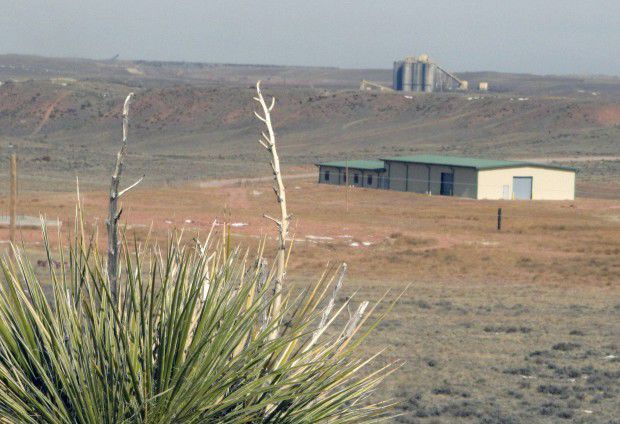Potential Developer of Two Elk Site Walks Back on Request for Tax Exempt Bonds From County

By Heather Richards
November 22, 2017 - A group of investors trying to bring a new coal venture to the infamous Two Elk site in northern Wyoming has called off its race to get $100 million in tax-exempt bonds from Campbell County. The decision comes ahead of a request for answers about unpaid taxes in Montana.
New Power’s idea is to build a coal improvement plant on the Two Elk property that would dry out Powder River Basin coal, turning it into a more valuable product. Wyoming companies could then export the coal overseas or sell it at a higher price here in the U.S., proponents say.
The bonds, allocated to Wyoming by the federal government, would help New Power draw investment dollars for the project. Commissioners remain amenable to the proposal despite this set back. It would be one of a handful of businesses seeking alternatives to help Campbell County’s chief industry, coal, face declining demand.
But, recent news that one of New Power’s investors, a firm with an idle gold mine in Montana, owed taxes in Montana and its manager Patrick Imeson had faced SEC violations decades before, left county commissioners with some unanswered questions.
Imeson’s firm owes Wyoming’s northern neighbor about $19 million in reclamation bonding – money set aside for clean-up at industrial sites—as well as about $5 million in unpaid taxes to a local county.
The businessman said in earlier interviews that Black Diamond knowingly inherited the unpaid bills when it bought the mine out from its previous owner years ago. It was a distressed business that Black Diamond had hoped to flip sooner. The company still intends to bring the mine back online and make good on its debts, he said.
The SEC violations were a mistake from years ago, he said.
New Power’s decision to walk back on the request from county allocated bonds is disappointing for everyone, said Commissioner Mark Christiansen.
But it does give the firms involved, and the county, breathing room, he said.
“We didn’t have enough time … to do that traditional level of diligence, and none of us have an existing relationship with [Imeson],” he said.
Christiansen said he understands that there are “two sides to every story.” The commission is still looking to work with the investors if they seek the bonds next year, but wants to be assured of its concerns over the Black Diamond history, and Imeson’s background, before it gives county approval.
The bonds do not put the county or Wyoming at a financial risk.
For Imeson, the short timeline proved to be too much too fast.
“We thought that was a real benefit to the county or the state if we could get this done quick enough,” he said. “Otherwise that allocation would go unused.”
Ultimately, it wasn’t worth it to make the county feel rushed, he said. Tax proposals being considered this week in Washington, meanwhile, may discontinue the bonding program, casting uncertainty over the availability of the bonds long term, he added.
It wouldn’t make or break the project, which is still progressing, he said.
As for any reticence from the county, Imeson said news coverage of Black Diamond’s history made an already rushed process more “arduous.”
But the investors understand that hesitation, he said.
“I think everyone is a lot more comfortable letting things take their course and play out accordingly.”
The Two Elk property is centrally located near Wyoming coal mines, but its reputation is tied to another coal venture that failed in Wyoming. Two Elk’s developer, Mark Ruffatto, admitted to defrauding the federal government out of millions of dollars in grant money, for a carbon capture research that never happened. Two Elk also received Campbell County tax-exempt bonds. Ruffatto is not associated with Wyoming New Power. He faces sentencing early next year.
For Imeson, the coal drying plant could take a bad legacy in coal country and turn it around.

The former site of the Two Elk Energy Park, a northeast Wyoming power plant project that was delayed almost since its inception in 1996, is shown March 26, 2013, near Wright.

